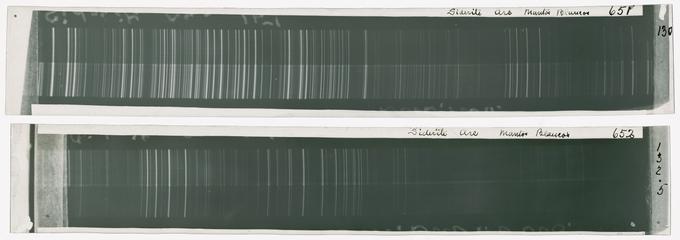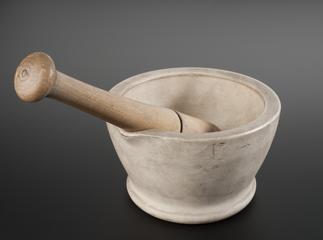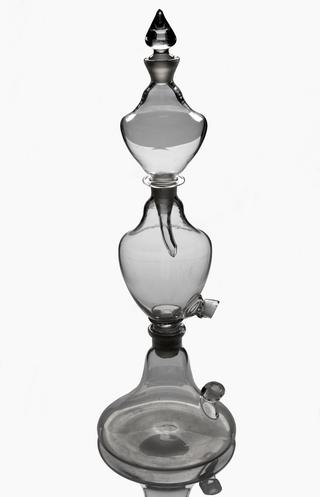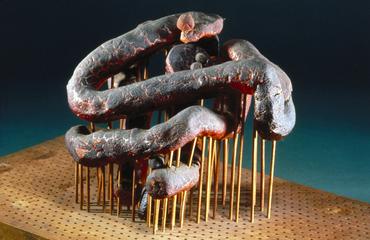
Stereochemical models of fumaric and maleic acids
- Made:
- 1920-1924
- maker:
- Science Museum



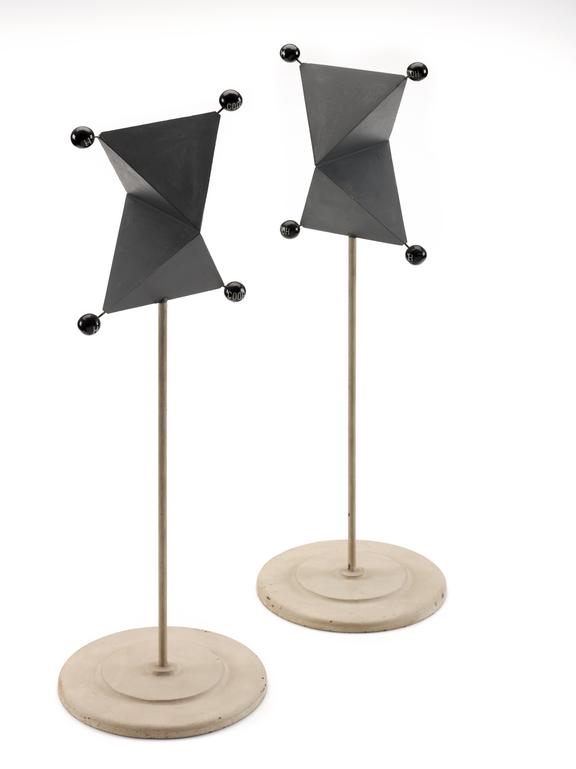


Stereochemical models of fumaric and maleic acids. Constructed in Museum.
Maleic and fumaric acids, examples of geometrical isomerism, have identical chemical compositions and a very similar general structure.
In 1874, can’t Hoff explained the stereoisomerism of the two acids, which are not optically active since the molecules are symmetrical. In these models, the tetrahedra surrounding the central carbon atoms are joined along an edge, indicating a double bond about which rotation is impossible. Two different arrangements for the carboxyl (-COOH) groups are apparent: on opposite sides of the double bond (trans-) as in fumaric acid (model 1) or adjacent (cis-) as in maleic acid (model 2).
